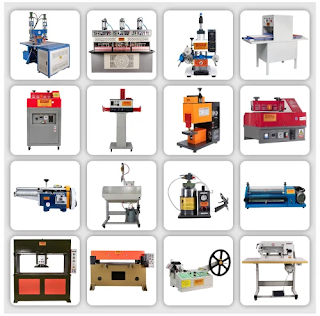In today's fast-paced consumer market, efficient and visually appealing packaging is no longer an afterthought, it's a necessity. Packaging machines play a crucial role in streamlining the packaging process, ensuring product protection, and creating a positive brand impression. But with a vast array of packaging machines online available, selecting the right one for your business can be a daunting task.This thorough guide will assist you in navigating the choosing process:
Understanding Your Needs:
The first step is to clearly define your specific packaging requirements.Here are some important queries to think about:
Product Type: The type of product you're packaging (food, beverages, pharmaceuticals, etc.) will significantly influence the machine's functionality and compatibility.
Packaging Material: Will you be using plastic films, cardboard boxes, or other materials? Ensure the machine can handle your chosen material efficiently.
Production Volume: Consider your production volume and desired output speed. High-speed machines are ideal for large-scale production, while smaller businesses may opt for more versatile machines.
Budget: Packaging machines come in a range of price points.Establish your spending limit and rank the features according to your demands.Exploring Packaging Machine Types:
Once you've identified your core requirements, delve deeper into the diverse range of packaging machines available:
Form-Fill-Seal Machines: These automated machines form packaging material into pouches, fill them with product, and seal them automatically, ideal for liquids, powders, and granules.
Carton Sealers: Used for sealing pre-formed cardboard boxes, these machines offer speed and efficiency for high-volume packaging.
Shrink Wrappers: Apply a heat-shrinkable film around products or bundles for protection and tamper-evident closure.
Strapping Machines: Machines that apply straps around pallets or boxes to secure them for transportation.
Labeling Machines: Automatically apply labels to products for branding, identification, and regulatory compliance.
Additional Considerations for Choosing Packaging Machines:
Beyond the core functionalities, consider these additional points for a well-rounded decision:
Ease of Use: Look for a machine with user-friendly controls and clear instructions to ensure a smooth learning curve for operators.
Maintenance and Cleaning: Consider a machine with easy access for cleaning and readily available spare parts to minimize downtime.
Safety Features: Machines with safety features like emergency stop buttons and guards are crucial for a safe working environment.
Scalability and Flexibility: If your production needs are expected to grow, consider a machine that can be easily scaled up or adapted to handle different product sizes in the future.
Brand Reputation and Service: Choose a reputable brand known for quality products, reliable after-sales support, and readily available spare parts.
BSM India Case Studies:
Understanding how other businesses have leveraged packaging machines can be highly insightful. For instance, a leading food manufacturer partnered with a reputable company (not BSM India) to implement high-speed form-fill-seal machines. This resulted in a significant increase in production output, reduced labor costs, and enhanced product consistency. In another example, a pharmaceutical company (not BSM India) utilized cartoning machines to streamline their packaging process, ensuring efficient and secure packaging of their medication.
BSM India vs. The Competition:
While numerous companies offer packaging machines online, here are some other notable players in the market:
RGN Machinery
Ishida
Yamato
PackTech
The Final Choice: Finding Your Perfect Packaging Machine Partner
By carefully considering your product requirements, production volume, budget, and desired features, you can make an informed decision when choosing packaging machines. Explore options from various reputable brands (including, but not limited to, the ones mentioned above). Ultimately, the best machine is the one that perfectly aligns with your specific needs and empowers you to achieve efficient, high-quality packaging for your products.

Comments
Post a Comment